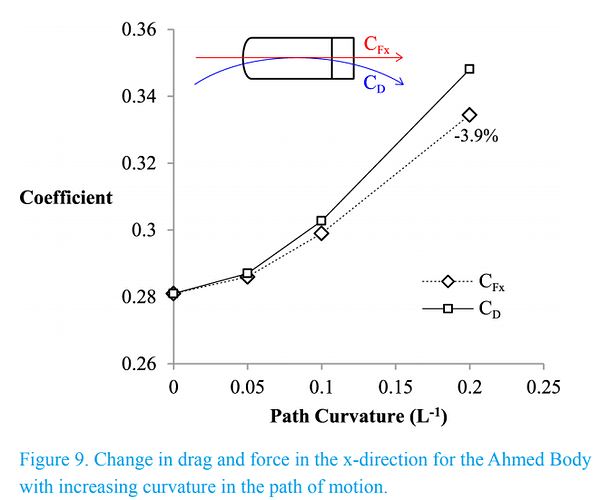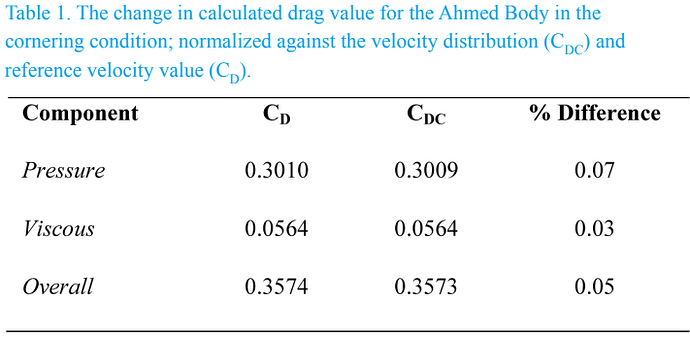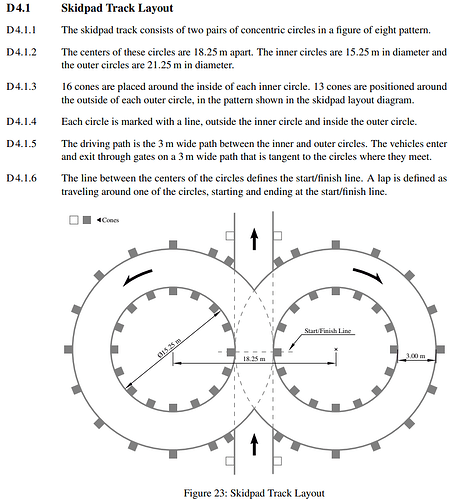So based on the ORSI of the last years car, we did have 1% stability in the results… thats good to know
Yes for the coefficients i will do 1 iteration saves. I do have a decent amount of core hours, I dont plan on using a lot as i need to do maybe 10 -15 full car simulations total.
I am with the FSAE team Raceyard from Kiel Germany, The account is Raceyard53 as you have probably seen. We did ok last year, there are always problems with the car working properly/being completed on time. The team has a lot of advanced systems but isnt very good at time management or keeping deadlines. This caused the 2018 car to not run at any events and last years car only started working towards the end of the season. Its too bad because we loose a lot of points at the design events due to having nothing on the car validated.
I would love to try your MRF idea. I read also the Curved wind tunnel thread Cornering Aerodynamics with Simscale
And the PDF within this thread Here
In the PDF it shows the following graphs towards the end. While i would love to experiment with the model in a curved wind tunnel, I have a few reasons NOT to peruse this test which are explained at the end.
With this summary at the end;
Summary
The cornering condition can have a significant effect on aerodynamic
performance of vehicles but is unable to be represented
experimentally. Experimental solutions developed for dynamic
motion of aircraft are not readily adaptable for automotive bodies.
The close ground proximity, high blockage ratio and the specific type
of motion all add complexity which increases the difficulty of
achieving the required flow conditions.
Fortunately numerical simulation permits investigation into the
condition. However aerodynamicists must remain aware of the
change affected by this condition. Numerical simulation must
accommodate curved flow occurring within a non-inertial reference
frame, and this requires additional considerations when constructing
such models. Due to the motion, drag begins to act in a curved path
and variation in Re occurs within the domain. Results highlight the
importance of adopting the correct analysis techniques when
evaluating aerodynamic performance for cornering vehicles.
Reasons not to do Curved wind tunnel test
- This difference in data, to me, seems fairly minimal in comparison to a straight wind tunnel.
- These tests on the Ahmed body are at 25 m/s. This is quite fast for what our car will be seeing on the track. My tests would include-
a. Official skid pad event inner radius at 7.625 meters
b. Low speed skid pad test at around 4-5 meters
c. High speed skid pad test at around 10-12 meters
-
(cont.) Therefore, outside of the higher speed skid pad, i do not see our cornering speed exceeding 20-22 m/s as most of the turns on the FSG track are slower speed turns. I have been using 18.06m/s for previous inlet velocity tests because this is the average speed for all turns on the track. Optimizing the car by simulating low and high speed cornering situations was not possible last year because i was the only one in the Aero team for the design phase. I simply didnt have enough time.
-
Speaking of not having enough time, my last reason is just that. If we can justify that a straight on simulation ( including the pitch, yaw, roll, and steering input changes for each skid pad trial) are enough to have accurate results within reason. I would vote to leave it as a straight wind tunnel simulating the car in those pre-set cornering angles.
Basically - is this worth the trouble? Are the results that much more accurate that we NEED to do this?


